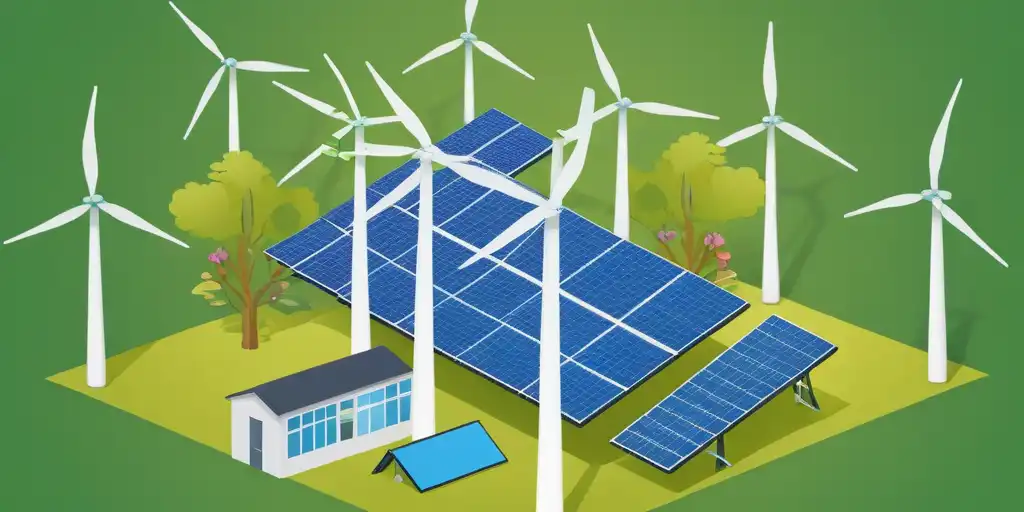Understanding Renewable Energy: A Comprehensive Guide Renewable energy sources have emerged as pivotal elements in the pursuit of sustainable development. As the world grapples with the twin challenges of climate change and energy security, harnessing renewable energy has become more crucial than ever. This article delves into the various dimensions of renewable energy, offering a detailed exploration of its types, benefits, and the future it delineates for our planet. The transition from fossil fuels to renewable energy is not just an environmental necessity but also an economic imperative. Fossil fuels, which have powered industrial civilization for over a century, are finite and their extraction and use have led to significant environmental degradation. On the other hand, renewable energy sources are abundant, cleaner, and increasingly cost-effective. This shift promises not only to mitigate the adverse impacts of climate change but also to drive economic growth and job creation in new sectors. Types of Renewable Energy Solar Energy Solar energy is one of the most well-known forms of renewable energy. It harnesses the power of the sun through photovoltaic cells and concentrated solar power systems. Photovoltaic Cells Convert sunlight directly into electricity. Can be installed on rooftops, solar farms, and even integrated into building materials. Concentrated Solar Power Uses mirrors or lenses to concentrate a large area of sunlight onto a small area. Generates heat that can be used to produce electricity. The benefits of solar energy are manifold, from reducing electricity bills to contributing to the reduction of greenhouse gas emissions. Moreover, technological advancements continue to enhance the efficiency and affordability of solar panels. Wind Energy Wind energy, another prominent form of renewable energy, is generated by converting wind currents into electricity using wind turbines. Onshore Wind Farms Located on land, these farms harness wind currents in rural or remote areas. Typically more accessible and less costly to install and maintain. Offshore Wind Farms Situated in bodies of water, these farms capture stronger and more consistent winds. Can generate higher amounts of energy but come with higher installation and maintenance costs. Wind energy is highly scalable and can be implemented in various environments, making it a versatile option for reducing reliance on fossil fuels. Hydropower Hydropower, or hydroelectric power, generates electricity by harnessing the energy of flowing or falling water. Types of Hydropower Run-of-the-river systems: Utilize the natural flow of rivers and streams. Reservoir systems: Store vast amounts of water in dams, releasing it as needed to generate electricity. Hydropower is one of the oldest and most reliable forms of renewable energy. It provides a consistent and stable supply of electricity and can quickly respond to fluctuations in energy demand. Biomass Energy Biomass energy is derived from organic materials, such as plant and animal waste, which are burned or converted into biogas or biofuels. Types of Biomass Solid Biomass: Includes wood, agricultural residues, and organic waste. Biogas: Produced through the anaerobic digestion of organic materials. Biofuels: Liquid fuels such as ethanol and biodiesel, derived from crops like corn and sugarcane. Biomass energy offers a way to recycle waste materials and reduce landfill usage, contributing to a more circular economy. Geothermal Energy Geothermal energy taps into the Earth’s internal heat to generate electricity and provide heating and cooling solutions. Geothermal Power Plants Use steam produced from reservoirs of hot water deep beneath the Earth’s surface to generate electricity. Can operate 24/7, providing a reliable and consistent energy source. Ground Source Heat Pumps Utilize the stable temperatures just below the Earth’s surface to heat and cool buildings. Highly efficient and can significantly reduce energy consumption for heating and cooling. Geothermal energy is a reliable and sustainable energy source with a small geographic footprint and minimal environmental impact. Benefits of Renewable Energy Environmental Benefits Renewable energy sources produce little to no greenhouse gas emissions, helping to mitigate climate change. They also reduce air pollution, which can have significant health benefits. Reduction in Greenhouse Gas Emissions Solar, wind, and hydropower produce no direct emissions during operation. Biomass and geothermal have relatively low emissions compared to fossil fuels. Improvement in Air Quality Reduced reliance on fossil fuels decreases the release of pollutants such as sulfur dioxide and nitrogen oxides. Cleaner air contributes to better respiratory health and reduces healthcare costs. Economic Benefits The renewable energy sector is a significant driver of economic growth, creating jobs and stimulating technological innovation. Job Creation The renewable energy industry employs millions of people worldwide. Jobs range from manufacturing and installation to maintenance and research. Economic Growth Investment in renewable energy infrastructure boosts local economies. Reduces energy import dependence, keeping more money within the local economy. Energy Security Renewable energy sources enhance energy security by diversifying the energy supply and reducing dependence on imported fuels. Diversification of Energy Sources Reduces the risk associated with geopolitical tensions and supply disruptions. Provides a more stable and predictable energy supply. Local Energy Production Promotes energy independence by utilizing local resources. Reduces the need for long-distance energy transportation, lowering costs and increasing resilience. Challenges and Solutions Intermittency and Reliability One of the primary challenges of renewable energy is its intermittency – the fact that sources like solar and wind do not produce energy continuously. Solutions to Intermittency Energy Storage: Technologies like batteries can store excess energy for use when production is low. Grid Management: Smart grids and demand response systems can balance supply and demand more effectively. High Initial Costs While the long-term savings of renewable energy are substantial, the initial investment can be high. Solutions to High Costs Government Incentives: Tax credits, rebates, and subsidies can reduce upfront costs. Financing Options: Innovative financing models, such as power purchase agreements (PPAs), can make renewable energy more accessible. Land and Resource Use Renewable energy projects can require significant land and resource use, which can lead to environmental and social conflicts. Solutions to Land Use Siting and Zoning: Careful planning and community engagement can minimize conflicts. Multifunctional Land Use: Combining renewable energy projects with other land uses, such as agriculture, can maximize benefits. FAQs What is




